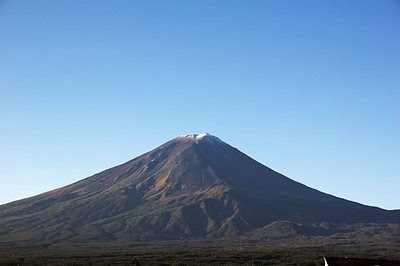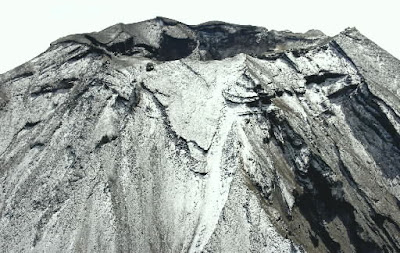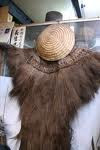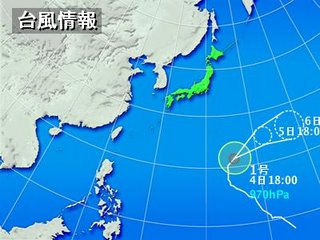[ . BACK to ARCHIVES TOP . ]:::::::::::::::::::::::::::::::::::::::::::::::::::::::::::::::::::::::::::::::::::::::::::::::::::::
About EGO and HAIKU, see below.... ... ...
"I personally have a problem with haiku-riddles.
And I want my haiku to be understood - otherwise,
why to write, to please yourself only?"
a haiku friend asked.
.............................................
Ambiguity and yugen (depth and mystery) are wonderful tools.
Most good haiku have more than one level of meaning.
Take for example, this haiku by Basho:
an octopus pot ---
inside, a short-lived dream
under the summer moon
What one person perceives as clear may not be clear to another with a different cultural memory and social context.
a haiku friend answered.
.............................................
These octopus pots are quite common for fishing in our area in the Seto Inland sea. In some parts, the coast is littered, so to speak, with the bones and souls of warriours from the Genpei war and others.
This haiku by Basho is rather clear. It is not a riddle to me, but full of cultural allusions and information.
It also reminds of the haiku about the dreams of ancient warriors in the summer grass of Hiraizumi.
Maybe our problem with the haiku riddles result from our different cultures where we originate?
Yugen (yuugen 幽玄) is part of many arts of Japan, not only haiku. It is part of the aesthetic aspect of many things here. Especially in the Noh Theater, we see a lot of
yugen but that is not identical with riddle, it is much more subtle than that and involves a lot of the common cultural understanding of a
man of letters (bunjin 文人), reaching back to ancient China and its early influence on Japan.
Maybe more later.... now is time for
drinking hot sake
from the old teacup -
memories and dreams
Gabi
Read the details about
the octopus pots, takotsubo 蛸壺!. Basho and the Old Pond . Three choices !
:::::::::::::::::::::::::::::::::::::::::::::::::::::::::::::::::::::::::::::::::::::::::::::::::::::
Compiled by Larry Bole: From Jane Reichhold's essay "Haiku Techniques:"The Technique of the Riddle - this is probably one of the very oldest poetical techniques. It has been guessed that early spiritual knowledge was secretly preserved and passed along through riddles. Because poetry, as it is today, is the commercialization of religious prayers, incantations, and knowledge, it is no surprise that riddles still form a serious part of poetry's transmission of ideas.
One can ask: "what is still to be seen"
on all four sides
of the long gone shack
The answer is:
calla liliesOr another one would be:
spirit bodies
waving from cacti
plastic bagsThe 'trick' is to state the riddle in as puzzling terms as possible. What can one say that the reader cannot figure out the answer? The more intriguing the 'set-up' and the bigger surprise the answer is, the better the haiku seems to work. As in anything, you can overextend the joke and lose the reader completely.
The answer has to make sense to work and it should be realistic.Here is a case against desk haiku. If one has seen plastic bags caught on cacti, it is simple and safe to come to the conclusion I did. If I had never seen such an incident, it could be it only happened in my imagination and in that scary territory one can lose a reader. So keep it true, keep it simple and keep it accurate and make it weird.
Oh, the old masters favorite trick with riddles was the one of: is that a flower falling or is it a butterfly? or is that snow on the plum or blossoms and the all-time favorite "am I a butterfly dreaming I am a man or a man dreaming I am a butterfly."
Again, if you wish to experiment (the ku may or may not be a keeper) you can ask yourself the question: if I saw snow on a branch, what else could it be? Or seeing a butterfly going by you ask yourself what else besides a butterfly could that be?
http://www.ahapoetry.com/haiartjr.htmFrom an essay by Jaroslaw Kapuscinski,
"The Future of Music:"I will read to you a haiku by my favorite master, a contemporary of J. S. Bach, Matsuo Basho (1644-1694) (the example below was translated by Lucien Stryk in a Penguin collection of Basho's haiku called "On Love and Barley").
"In my new robe
This morning
Someone else"Let me read it once again but with the lines backwards:
"Someone else
This morning
In my new robe"
There are only three lines, but what richness of meaning. To achieve it Basho uses a well-known haiku convention that is most important to us here. Not all haiku use this principle but most do. It is called the
principle of internal comparison.
You compare the meanings of the three lines and consider that they all refer to the same thing, in our terms that they are all "sides" of one hand. This technique gives haiku a unique quality of growth -- an ability to convey so much more emotion than is expected at a first reading.
You generate a whole space of meaning or experience in a dimension that is well beyond that of the three images defined in the three lines individually. Haiku may seem small, but in their case it is certain that size does not matter.
This haiku does not only grow, but actually reverses its meaning back and forth as you keep rereading it.
"In my new robe"(We think of a new look, something you have not worn before, external appearance, surface...)
"This morning"
(A new day, a beginning...)
"Someone else"(Me or not me or just a new me...)
But a morning is only one of many mornings; it is the morning after a day and before another. The whole concept of the new, fresh, or of a beginning, is suddenly put in doubt and reversed. "Someone else" seems to sound like an irony for a moment. But if you insist on the "not me" interpretation of "someone else" then you realize that there is never a morning or a day that is a copy of another, and the newness resurfaces again. And so it continues...
The triangle of images seem to be representing aspects of the same experience but they pull us into a paradox, they present a contradiction that cannot be reconciled.
Like a koan, this haiku is a riddle that has no static answer. You can only understand it in a dynamic, constantly changing way.
http://www.rogerreynolds.com/jarek/jarek.html
Now granted, this last example may be stretching the meaning of riddle, but riddles don't necessarily have to have answers in order to be riddles.
Definition (2) from
Webster's New World Dictionary, College Edition, 1962:
"any puzzling, perplexing, or apparently inexplicable person or thing, as a difficult problem or enigmatic saying; enigma."
And from "
The Princeton Encyclopedia of Poetry and Poetics," 1974 edition:
"RIDDLE. Essentially a metaphor which draws attention to likenesses between unrelated objects..."
However, in an essay by
William J. Higginson, "Haiku Clinic #2" from "Simply Haiku," he warns against using the riddle technique "when a first or last line seems to answer a riddle posed by the rest of the poem."
In "Haiku Clinic #1" (ibid.) Higginson writes, "...the setup and delivery mode, or riddle and solution, a kind of logic, still doesn't work very well in haiku."
I would tend to agree with the last statement. However, I propose that the technique is viable, as Reichhold suggests, if instead of answering the posed riddle explicitly, the haiku leaves the answer up to the reader.
Although I'm sure there will be disagreement, I see the following by Basho as a type of "riddle" haiku:
'Greeting the New Year near the capital'
the man wearing
a straw mat, who is he?
blossoms in spring
komo o kite tarebito imasu hana no haru
straw-mat acc. wearing what-person is blossom 's spring
tr. David Barnhill
Barnhill writes:
"In commenting on this hokku, Basho lamented that he lacked the ability to distinguish a mere beggar from a sage, who may live in poverty."
:::::::::::::::::::::::::::::::::::::::::::::::::::::::::::::::::::::::::::::::::::::::::::::::::::
We must also distinguish between a riddle and
something plainly not understandable.
Sometimes it is only because of not enough cultural knowledge, sometimes something expressed in words toooo poetic to fit a classical Japanese haiku and reads like a mix of modern European haiku poetry.
Creating depth or confusion ? The haiku poet is always challenged to choose his words carefully!
Something beyond the concept of simple shasei, sketching from nature, turns the real into the irreal, something strongly filtered through the phantasy and psyche of the poet.
Maybe we could call it :
surreal, as in a painting of Salvadore Dali. You can almost see the beard on the face of the smiling me/frog
an old pond . . .
the frog jumps
through me... ... ...
a sound of water
from the old pond -
I am the frogGabi
SNAPSHOTS
about shasei, sketching from nature without phantasy or ego In Zen, we train to loose the EGO, or rather, feel one with the ALL. In that sense, I am the FROG! I am the butterfly and the dandelion by the roadside. So there is no need to state that in every haiku.
My above poems are examples for a way I think
HAIKU should NOT BE written.
Short poems or verses like this, yes, but why name it haiku?
..............................................
For a number of years I have argued against the lack of punctuation in modern genre haiku. It allows for an ambiguity which is unnecessary and which contrasts with the subtle allusiveness of classical Japanese haiku.
Full discussion is here :
Hugh Bygott, August 2007 :::::::::::::::::::::::::::::::::::::::::::::::::::::::::::::::::::::::::::::::::::::::::::::::::::
Another examplefour legs
in my kitchen -
spring morningWell, I find this plain confusing. It could be so many things, from animals to furniture. I do not think this poem creates any depth by being so vague.
four small legs
in my kitchen -
spring morningAny better?
Two little chicken? Or one kitten? The chair for our firstborn son? A tiny table for the grandchildren who are coming for Easter? A cockroach where the kids have torn out two legs and left the poor corpse on the table?
Still too much to think about and not much to enjoy easily as an image.
What inspired all this was a movie about a rural family with a very small pony as a family member.
having breakfast
with our new pony -
spring morning
Now things are clear, I feel. Now the reader can understand what I am showing and create his own story about the scene, dream his own dream about living with animals ...

This is an example of
. AIMAI 曖昧 . , translated as
ambiguous, unclear or vague.
:::::::::::::::::::::::::::::::::::::::::::::::::::::::::::::::::::::::::::::::::::::::::::::::::::
Ambiguity in haiku is sometimes useful, but simple confusion is usually not and does not help to produce "depth", but leads the mind straight to its intellectual side, trying to figure out what is going on, who is doing what ... and so missing the initial situation, not being able to see the initial image clearly.
Gabi Greve
:::::::::::::::::::::::::::::::::::::::::::::::::::::::::::::::::::::::::::::::::::::::::::::::::::
Now a bit more on................................... Haiku and EGOQuote from "Speculations of Robert Spiess"608
A genuine haiku is the 'testament' of an aspect of the world process itself, apart from any intervention of human
ego.
627
As human nature tends to be deflected from its original unity and simplicity by
ego and its constrictive and seductive illusions, haiku are salutary in mitigating this tendency, and to bring our nature back to its original mode.
653
The haiku poet does not need
ego in order to be self-aware.
717
Haiku poets should be aware of the tyranny of the
ego, for it clings to its obsession with being special.
726
By forgetting one's
ego, the haiku poet's true being is confirmed by all things.
867
In a haiku’s now-moment (whether immediate or from memory) the
ego and the intellect are to be left behind.
871
In genuine haiku the heart annihilates the
ego.
Speculations of Robert Spiess
long-time editor of Modern Haiku.... ... ...
Bruce Ross identifies a "tendency in the fourth generation of American haiku writers of the late seventies, eighties and early nineties unfortunately to frequently offer catchy moments of sensibility that often rely on obvious metaphoric figures.
These American poets desire to create 'haiku moments'. But a
subjective ego, call it sentiment or call it imagination, intrudes upon their perception of the object".
In Zen parlance there is no need to "put legs on the snake" - not even poetic metaphysical ones.
The insight of the haiku moment is fresh, new-minted perception, though it may be so ordinarily expressed as to risk failing the "So What?" test unless the reader's reception is similarly attuned.
Haiku offer a glancing opportunity, without the poetic prompting of another, to accept for ourselves how it is.
Blyth says:
"Where Basho is at his greatest is where he seems most insignificant, the neck of a firefly, hailstones in the sun, the chirp of an insect ... these are full of meaning, interest, value, that is, poetry, but not as symbols of the Infinite, not as types of Eternity, but in themselves. Their meaning is just as direct, as clear, as unmistakable, as complete and perfect, as devoid of reference to other things, as dipping the hand suddenly into boiling water."
Zen is commonplace: the ordinary is extraordinary when we are jolted out of our habitual selves; there is no need to hype it up.
Read this most interesting article HERE !Zen and the Art of Haiku. Ken Jones... ... ...
In Japanese haiku, the ego is to be not-present.
According to the masters of Japanese Poetry, good haiku may only be composed in a state of egolessness. The Poet and the subject of the poem must become one, in a state of thoughtless awareness (meditation).
The loss of ego-
The sea falls into the drop
So why speak of loss?Graham Brown, Australia... ... ...
The Healing Spirit of Haikuby David Rosen
In particular they address the need to react to and relate with other human beings as well as nature. Rosen and Weishaus emphasize the interconnections of haiku with Zen Buddhism, Shintoism, and Taoism. This is not a book about the history of haiku or how to write them.
This is not a self-help book in the usual sense, but rather a non-self (
beyond the ego) healing volume that ideally helps one to realize that we are alone only in the ways we choose to be. This book values haiku moments and creativity and underscores the philosophy: "Moments, moments, that is life."
Amazon. comego ZEN trick :::::::::::::::::::::::::::::::::::::::::::::::::::::::::::::::::::::::::::::::::::::::::::::::::::::
“The tree manifests the bodily power of the wind;
The wave exhibits the spiritual nature of the moon.”Zenrinkushu
Blyth tells us in response,
“If the tree were strong enough it would manifest nothing.
If the wave were rigid, the moon’s nature could not be expressed in it.”
snipIn other words, Blyth is saying that the writer of hokku must “empty himself” of the desire to “express himself,” to “become a poet,” to “make a name for himself,” and it is only because of that emptiness — like the emptiness of a mirror undimmed by dust — that the writer can truly experience and express the “things” that are the primary matter of hokku.
LISTENING TO R. H. BLYTHsource : David Coomler, Hokku :::::::::::::::::::::::::::::::::::::::::::::::::::::::::::::::::::::::::::::::::::::::::::::::::::::
quoteTraces of Dreams - Haruo ShiraneCultural Landscape... Spring rain, for example, became associated with soft, dreamy thoughts; the wet season, particularly that of the Fifth Month, implied a sense of unending depression; and the intermittent showers of winter connoted impermanence and uncertainty.
These poetic topics and their associations are, in a fundamental sense, imaginary worlds, which join the poet and the reader, and represent a communal, shared imagination. In writing about the scattering of the cherry blossoms, the Japanese poet is not just writing about a specific, direct experience; he or she is writing a supplement to or a variation on a commonly shared body of poetic associations with respect to the seasons, nature, and famous places based on centuries of poetic practice.
Here, as in the allusive variation (honkadori),
originality or individuality is not the touchstone of literary genius, as it often is in the Western tradition.
Instead, high value is given to the ability to rework existing subject matter. source : books.google.co.jp :::::::::::::::::::::::::::::::::::::::::::::::::::::::::::::::::::::::::::::::::::::::::::::::::::::
Danjuro XII and the freedom in Kabuki actingFreedom is fine; but I get the feeling that many modern-day Japanese have forgotten that freedom comes with responsibility. This concept is found in kabuki, so people who come to watch it will be exposed to the responsibility of freedom as well as freedom's limits.
Think of freedom as a dog that feels free to run around a fenced garden. It feels satisfied because it is not stuck in the house, even though it doesn't have the freedom to go outside the garden.
Freedom exists inside the garden as well as outside.
But there is a barrier.
Nowadays, there is no such barrier.
I think kabuki expresses the freedom that exists within a barrier.DANJURO XII
Destined to act wild ... read the full interview!
This is almost the same as my haiku teacher told me when I asked her about expressing my individuality within the many guidelines of Japanese traditional haiku!
She also said
"Find your own voice within the limits! Express yourself within the promises (yakusokugoto) of haiku!
And if you can not or do not want to do that,
write free poetry. "Gabi Greve
:::::::::::::::::::::::::::::::::::::::::::::::::::::::::::::::::::::::::::::::::::::::::::::::::::
Now, is this one surreal, irreal, methapyhsical, phantastic or
plain sketching from what is before my eyes?
getting older -
even the gods
need glasses
Jizo, a god wearing glasses  Here you can look at some of my sleeping stones !
Here you can look at some of my sleeping stones !Gabi
Read my thoughts on
Yugen (yuugen 幽玄):::::::::::::::::::::::::::::::::::::::::::::::::::::::::::::::::::::::::::::::::::::::::::::::::::::
the following is a qoute from
source : www.roadrunnerjournal.net :
SURREALISM & CONTEMPORARY HAIKU
~ OR ~
SURREAL HAIKU?by Philip Rowland
Other examples of somewhat surrealistic, classic haiku include Bashō’s:
tsuki izuku kane wa shizumeru umi no soko
where is the moon?
the temple bell is sunk
at the bottom of the seaShuson’s commentary on this haiku underlines its highly subjective and imaginative (even “fanciful”) power: “In his mind Bashō saw the light of the full moon and heard the faint sound of the bell. Although there was no moon in actuality, its absence led him to fly on wings of fancy to a mysterious but concrete world in his imagination.”
Shuson’s comment is a useful reminder that the “mysteriousness”of a perception need not detract from its vividly “concrete” poetic rendering.
Philip Rowland
my comments are here:. The mystery background story
of the war bell at the bottom of the sea :::::::::::::::::::::::::::::::::::::::::::::::::::::::::::::::::::::::::::::::::::::::::::::
. The Point of Ego and Individuality . . . . . .
BACK TOMy Haiku Theory Archives [ . BACK to WORLDKIGO . TOP . ]:::::::::::::::::::::::::::::::::::::::::::::::::::::::::::::::::::::::::::::::::::::::::::::::::::::
































